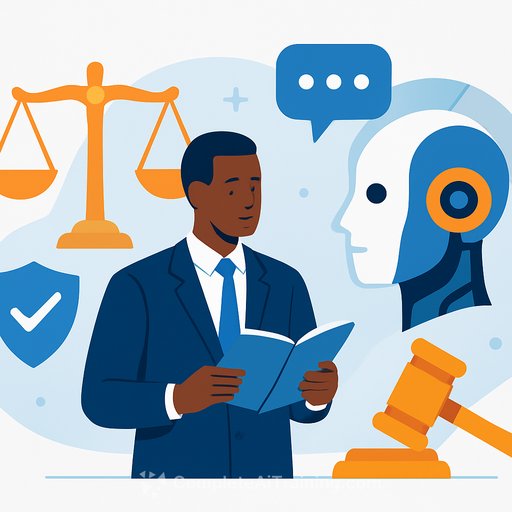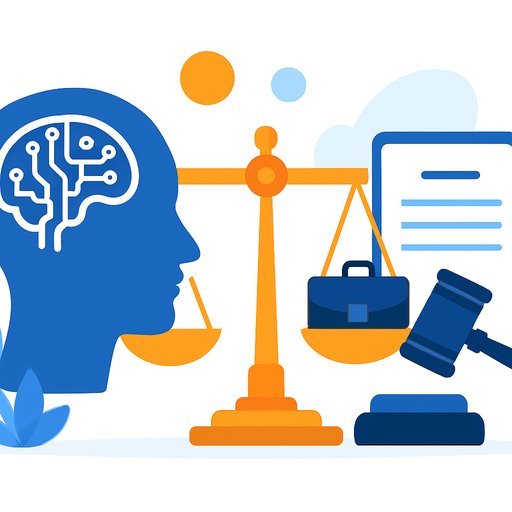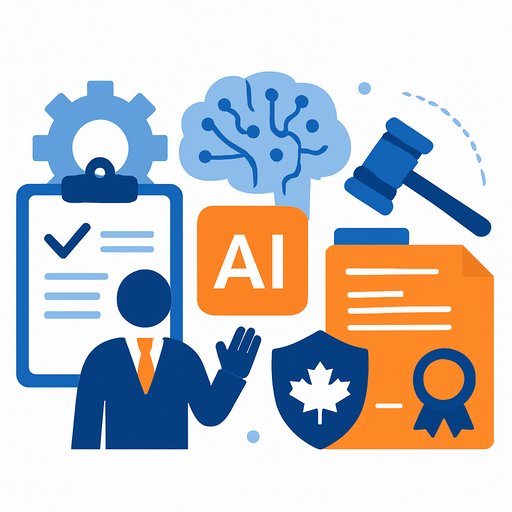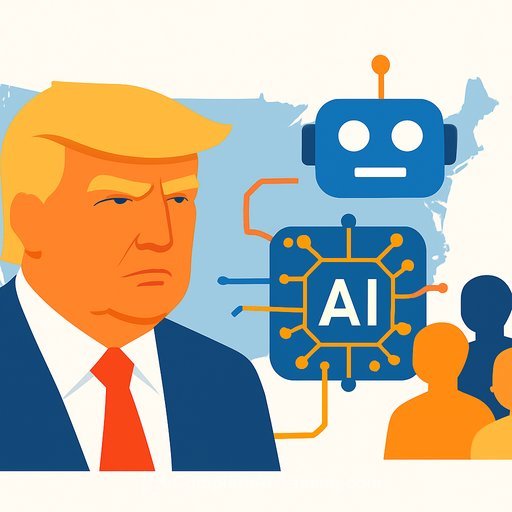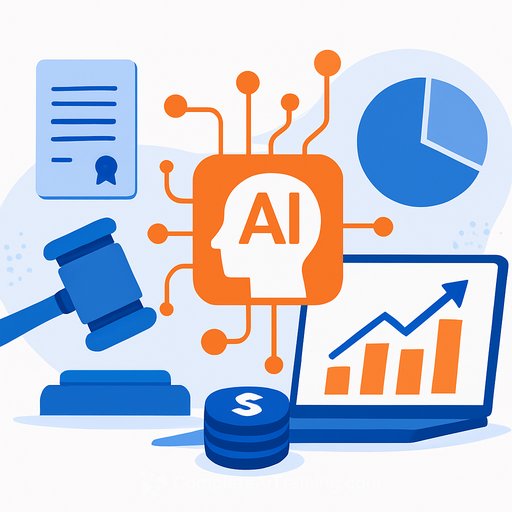Generative AI in Law: Speed With Safeguards
Artificial intelligence is reshaping legal work by improving efficiency and supporting complex tasks. Generative AI stands out because it doesn't just analyze-it creates. It drafts, summarizes, proposes clauses, and reviews documents at scale.
That means faster first drafts and quicker issue spotting. It also means higher responsibility on the human side to review, verify, and control for risk.
What Generative AI Does Well-Today
- Drafts legal texts and contract clauses from structured inputs and playbooks.
- Summarizes case law and long documents for internal use.
- Redlines and compares versions to surface changes and risky language.
- Processes volume work so attorneys can focus on analysis and strategy.
This is happening across large, mid-sized, and small firms, and in-house teams. It's already part of daily practice.
Use It, Don't Outsource Judgment
Recent missteps show the cost of overreliance. A California attorney was fined after filing an appeal with fake quotations generated by an AI tool. A consulting firm refunded part of a fee to the Australian government after a report included fabricated or misattributed citations.
The lesson is simple: AI accelerates; lawyers decide. Experts can spot problems quickly. Newer users are more likely to miss inaccuracies and made-up sources.
How Legal Professionals Are Using It
- Data protection is the top concern for 76.9% of respondents.
- 61.5% use generative AI occasionally; 30.8% use it frequently under strict guidelines; 7.7% don't use it at all.
- Among users, about 75% rely on approved tools from firms, schools, or vetted vendors with built-in safeguards.
Confidence is higher when tools are sanctioned and governed. Oversight creates accountability and reduces mishandling of sensitive data.
Verification and Ethics Habits
- About 70% regularly check outputs against trusted legal sources.
- 23% verify occasionally.
- 7% were unaware of risks like hallucinations or inaccurate results.
- Roughly half follow formal internal guidelines; the rest operate with limited or no structured policies.
Uneven access to certified tools and clear rules makes confidentiality and compliance harder to uphold.
How Practitioners Describe the Shift
"AI is becoming an integral part of our lives and a tool that all professionals will eventually need to embrace, as it will become part of everyday business. As lawyers, we must adapt to understanding the risks, implications, and boundaries to use AI effectively. It can help us streamline administrative processes and allow us to focus on more complex, analytical work," stated Lourdes Marquez, senior counsel at Revolut.
"Artificial Intelligence is like a shattered mirror. While it can provide answers to your questions much like reflections in broken glass it doesn't reveal the full picture," said Robert Masocha, LL.M. graduate from Loyola. "Some parts remain distorted or blurred, and it's up to legal professionals to verify the information for accuracy. Still, it serves as a valuable starting point, offering guidance and direction, but it should never be relied upon entirely."
A Practical Framework for Safe Adoption
- Use approved tools: Choose enterprise solutions with data controls, access logs, model governance, and clear licensing. Lock down data retention and training settings.
- Protect confidentiality: Don't paste client secrets into unmanaged tools. Use redaction, synthetic fact patterns, or sandboxed environments. See ABA Model Rule 1.6.
- Define allowed use cases: Research assists, drafting first passes, summarization, clause suggestions, and issue spotting. Prohibit tasks that would create unauthorized communications or filings.
- Require human review: Every output gets checked for accuracy, citations, and context. Shepardize/KeyCite anything cited. Never file or send client-facing work without attorney sign-off.
- Demand sources: Ask the tool to show references and then validate them. No source, no reliance.
- Track provenance: Keep prompts, outputs, versions, and approvals in your DMS or matter file for accountability.
- Mind privilege and work product: Label internal AI drafts appropriately and avoid exposing privileged facts to external systems.
- Vendor due diligence: Evaluate security (SOC 2/ISO 27001), data handling, storage location, subcontractors, and incident response.
- Train your teams: Teach safe usage, verification, and common failure modes. Update playbooks as models change.
- Client communication: Disclose responsible use when appropriate, especially in regulated or sensitive matters.
Minimum Viable Policy Checklist
- Approved tool list and versions
- Clear "do/don't" use cases by practice area
- Data handling rules (redaction, PII, retention)
- Verification steps and sign-off requirements
- Source validation protocol (citations, case law checks)
- Logging, audits, and exception reporting
- Client disclosure guidelines and conflicts checks
- Ongoing training and designated point persons
Start Here: A 90-Day Plan
- Run a small pilot on low-risk, high-volume tasks (e.g., internal summaries, clause suggestions). Measure time saved and error rates.
- Create prompt templates and clause libraries aligned with your playbooks and risk tolerances.
- Integrate with your DMS/KM so outputs live where lawyers work, not in random chats.
- Stand up a redaction pipeline for training examples and testing.
- Review results monthly, tune guidelines, and expand carefully.
- Offer accredited training and refreshers. If you need structured options, explore curated courses by role at Complete AI Training.
The Bottom Line
Generative AI is becoming standard in legal work. It improves speed and coverage, but it doesn't replace judgment, ethics, or accountability.
Adoption works best with approved tools, clear policies, and disciplined verification. Do that, and you'll gain efficiency without sacrificing accuracy or client trust.
Your membership also unlocks:

